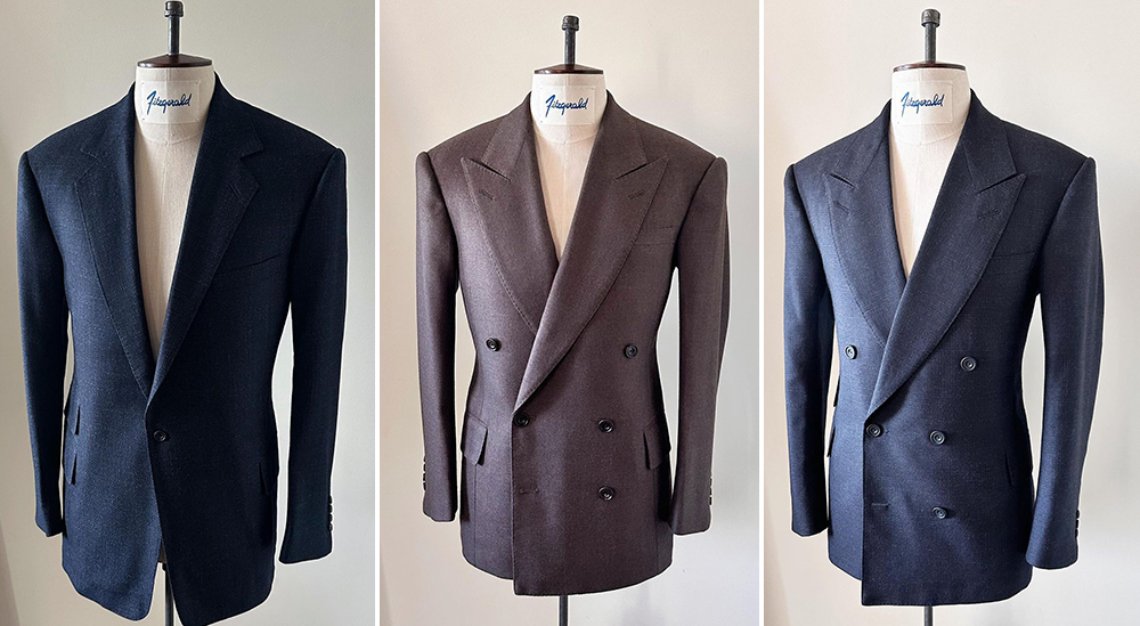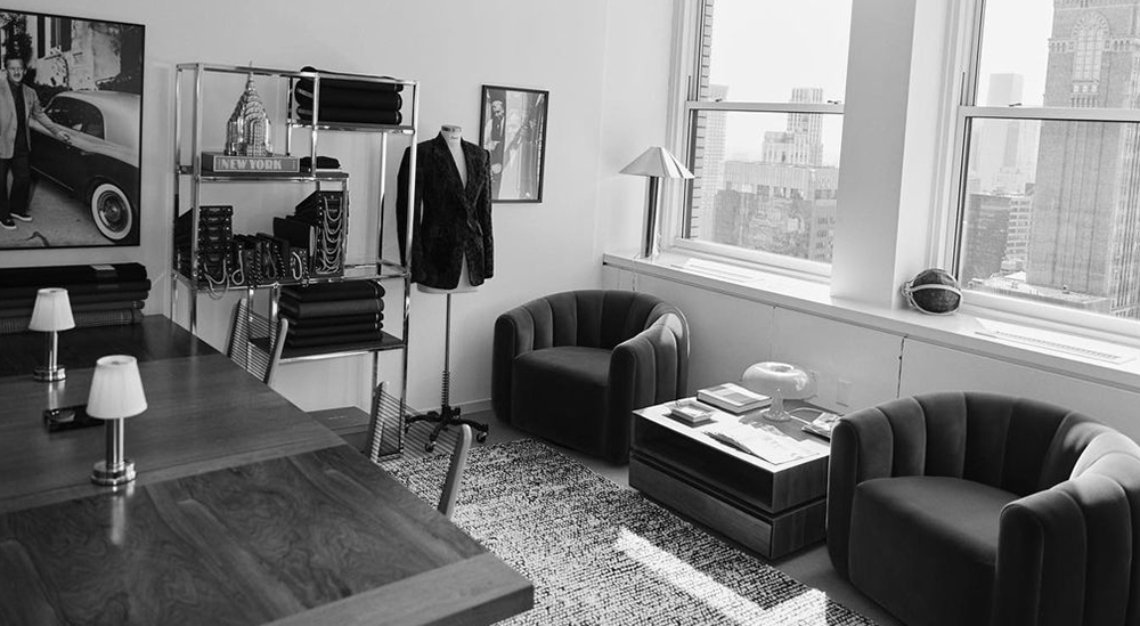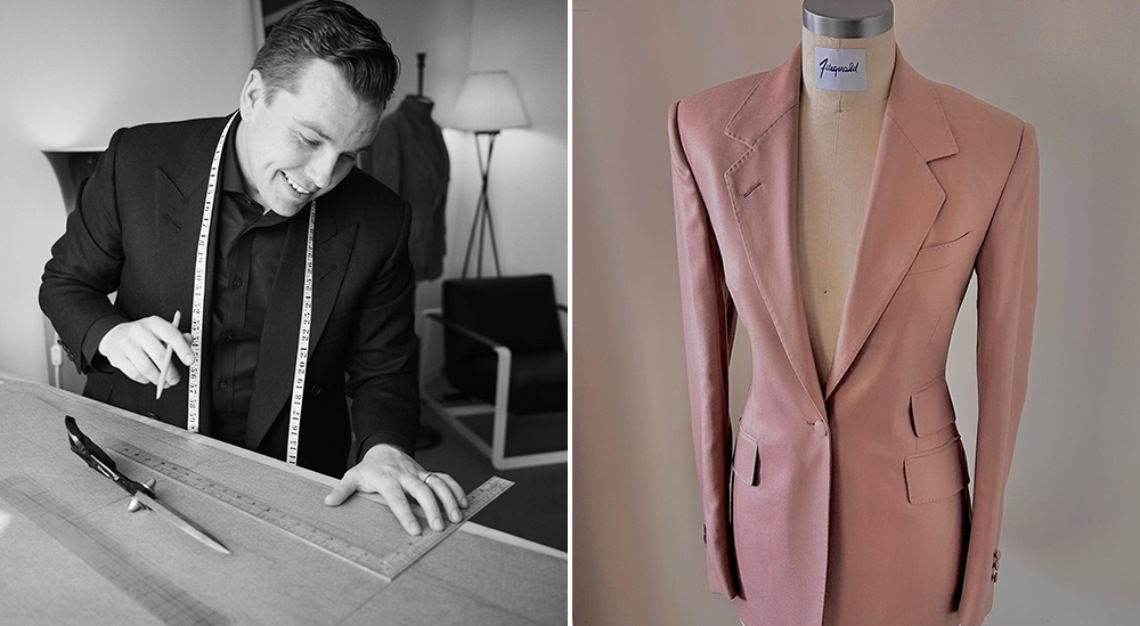Ralph Fitzgerald went from an unpaid apprenticeship in London to opening his own showroom in one of New York City’s most famous buildings
These days, Ralph Fitzgerald, the self-described “one-man band” behind newly minted bespoke maker Fitzgerald, sees clients in a light-filled atelier on the Chrysler Building’s 49th floor. His perch high-up in the Art Deco landmark is a far cry from the dark, street-level showrooms of London, where Fitzgerald began working as an unpaid tailor’s apprentice in his teenage years.
But as the 30-year-old freely concedes, those early days at the bottom rung proved instrumental to his present-day success. “That’s really what built my character and got me involved with everything in a small business,” Fitzgerald tells Robb Report. “I was just really hungry for it, and I loved every moment.”
At 16, Fitzgerald left school with the vague notion of getting involved in menswear. That curiosity, and a need for an occupation, led him to Douglas Hayward, a Mount Street firm famous for its celebrity clientele and clubby atmosphere. Though its eponymous founder had passed on years earlier, Fitzgerald—who worked for two years without pay—soon found himself brushing shoulders with some of Hayward’s most notable clients.

On one memorable evening, he was tasked with delivering a suit to Sir Roger Moore’s hotel room. Upon its delivery, the ex-007 actor asked Fitzgerald what his plans were for the night and slipped him a £50 note when he responded that he had a date. On other days, Fitzgerald would chat with an older man named Terry who’d visit the shop and bring him coffee. Years later, Fitzgerald realised that this man was Terry O’Neill, the legendary photographer of London’s swinging ‘60s.
After two years at Hayward, Fitzgerald finally earned his pay and received more responsibilities. He was taught how to “strike” cloth by marking a client’s pattern in chalk, and eventually to cut the cloth itself. Fitzgerald, who’d initially thought he’d be a coat maker, had found his calling.
“I was obsessed with cutting patterns, and that to this day is my favourite thing,” Fitzgerald says. “The numbers, the measures involved, the scales, and the formulas—I just love it.”
Four years after leaving school, Fitzgerald arrived on Savile Row with a job at Kilgour, where he received an education in fashion. From there he was recruited by Huntsman, which sent him to New York in 2017 to work as a cutter at its pied-à-terre on West 57th Street. He was promoted to head cutter two years later, a title he’d hold until leaving Huntsman this past summer to strike out on his own.
In his new role, Fitzgerald sees all clients himself and cuts every pattern. The garments, which start at US$6,000 for suiting and US$4,800 for jackets, are made by tailors in London, although Fitzgerald hopes to one day have all work done locally. Commissions typically require two fittings and are completed in an average of 12 weeks for first-time clients, or six weeks for repeat customers.

Fitzgerald’s past employers have influenced his “London cut” typified by a strong shoulder, a low buttoning point, and plenty of waist suppression. As a matter of house styling, jackets tend to have straight pockets and a single button. Added to this mix is Fitzgerald’s love of rare and luxurious fabrics: clients will have a crack at his collection of vintage cashmere bolts from the ‘80s and ‘90s, and he plans to develop suitings unique to the business.
While imbued with all the swagger and power of traditional English tailoring, Fitzgerald’s make has a key difference—weight. Responding to the demands of stateside clients, the jackets are constructed with softer shoulder pads and lightweight canvassing.

About 50 per cent of Fitzgerald’s clients so far have been women, a development that’s taken him by surprise, but one he clearly delights in. For one thing, his women’s cut—which is actually more built-up than its male counterpart, with more shoulder padding and extra waist suppression—has allowed him to work with lush fabrics including lambswool bouclé and velvet.
“It’s just the way that it absorbs the light, it’s so luxurious and lovely,” he says of the velvet suiting. “They’re just really fun garments.”
Along the way, Fitzgerald has even picked up a nickname from his customers: “The Chrysler Tailor.” “That has come up in the last few weeks from people, and I think that’s really cool,” he says of his nom de shears.
And while a catchy new title and sky-high views could inflate anyone’s ego, Fitzgerald seems determined to remember what got him into the trade in the first place. “It’s early days,” he says of the business’s first few months. “I just want to make some good clothes, and that’s really it.”
This story was first published on Robb Report USA






